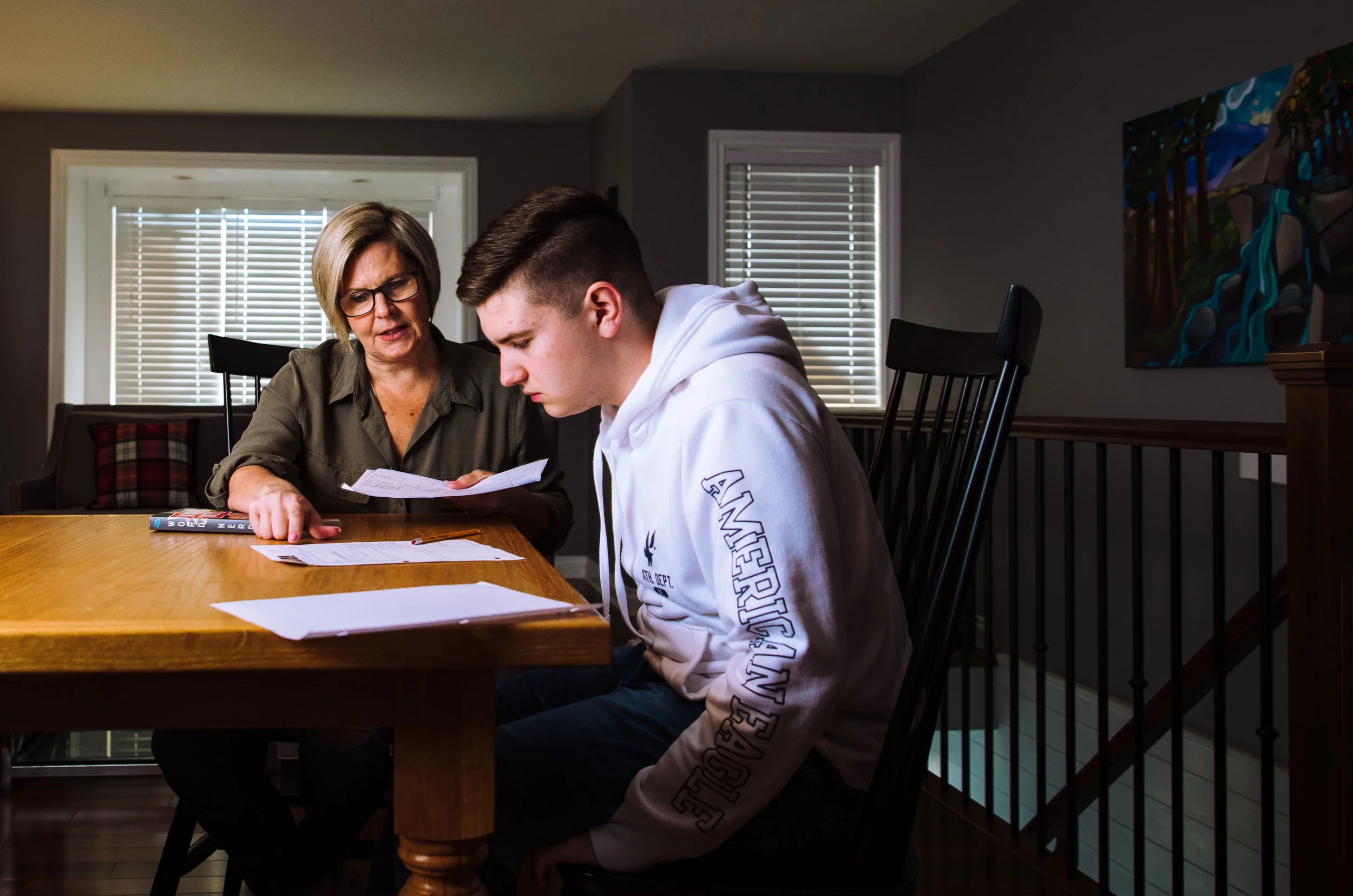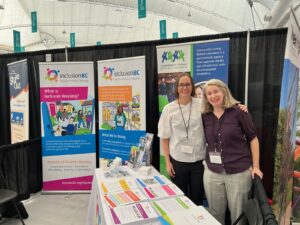
Equipped with a stack of mints to hand out, our trusty Inclusion BC folders, and a sense of determination, we were resolved to push for change and gain allies for inclusive housing over the next two days. This was the second time Inclusion BC attended the Union of BC Municipalities conference. We were excited and ready to share information and build partnerships with local councillors, mayors, and decision-makers ready for change.
On the walk to the Convention Centre from the SkyTrain at Waterfront Station, I was reminded how fortunate we are as an organization to be empowered and trusted by so many people, their families, and community partners. In July, we co-hosted an Inclusive Housing open house with the Nanaimo Association for Community Living. Something one of the participants shared that day continues to push me forward: “I never know how the world will treat me when I leave my home in the morning.” Despite the sadness of their sentiment, they expressed that home was their safe place, and all people should have that kind of security.
Inclusion BC’s Inclusive Housing Campaign is designed to map local data on housing demands for people with intellectual and developmental disabilities in partnership with SPARC BC. The goal is to increase inclusive housing opportunities, obtain key findings across the province, and strengthen advocacy by empowering and supporting community leaders.
With our inclusive housing fact sheets in hand, we were ready to share what we learned and build allyship with those in positions to influence change.
We spoke to representatives from more than 60 municipalities and regional districts across the province. We heard from every single one that housing security was one of the main topics that their communities were concerned about.
Many of the councillors we spoke to were in their first year of service and eager to make positive changes in their communities to ensure that everyone is included. We were happy to provide information and suggest practical steps for them to share with their colleagues. We will be following up with each community to provide data on their local housing needs.
We also learned that we still have a long way to go in educating people on what inclusive housing really means.
The 5 key elements of inclusive housing are:
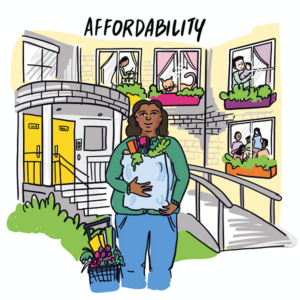
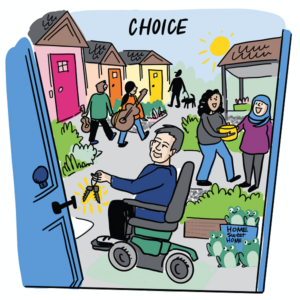
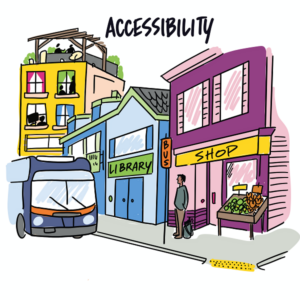
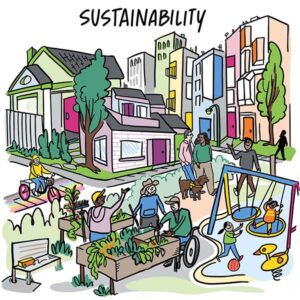

We know there is more work to do. More than 5,000 people with intellectual and developmental disabilities are looking for homes in British Columbia. We’ve come away from this event with a renewed determination to push for change. The desire to build more inclusive communities is there, our job now is to show decision-makers how we can get there together.
This article was featured in the latest edition of our monthly newsletter, Inclusion in Action. Subscribe today to receive regular updates with stories like this.

